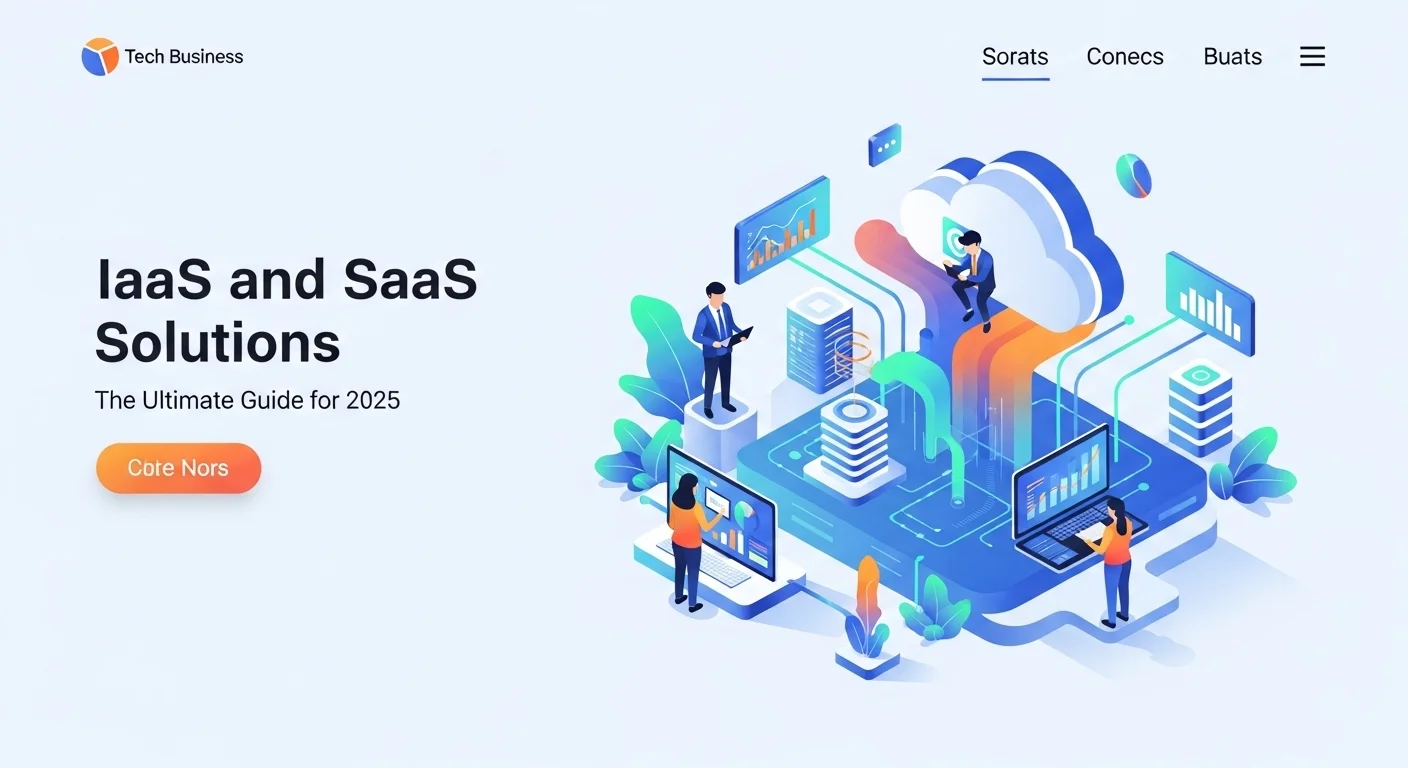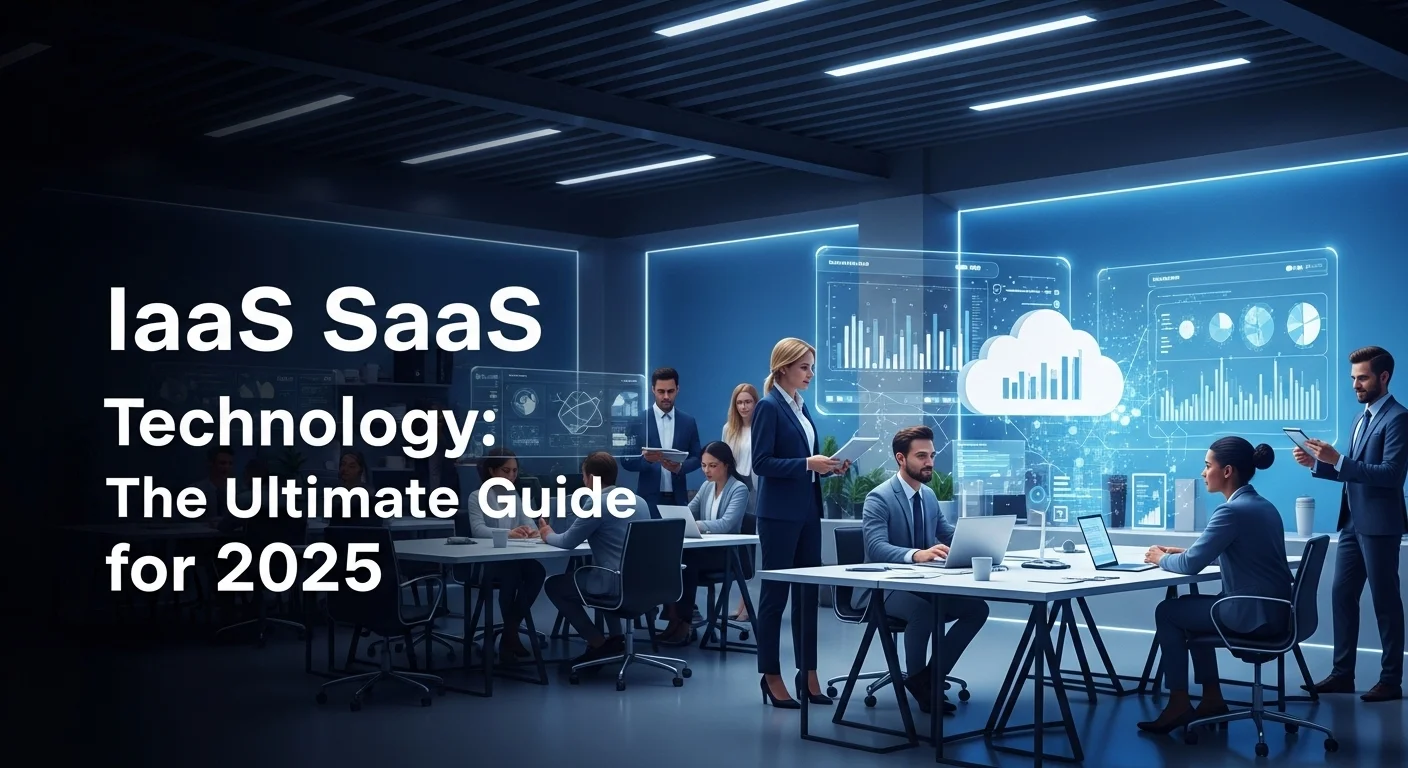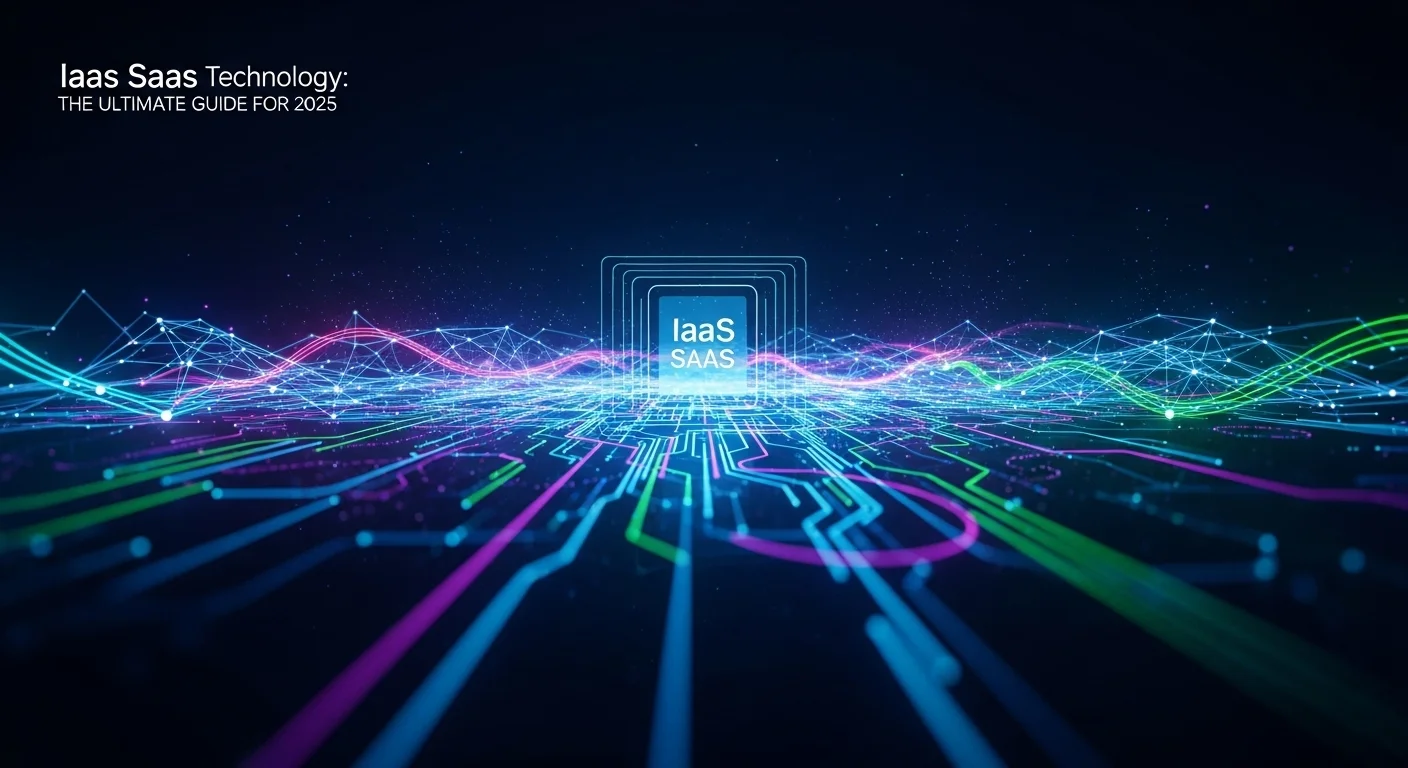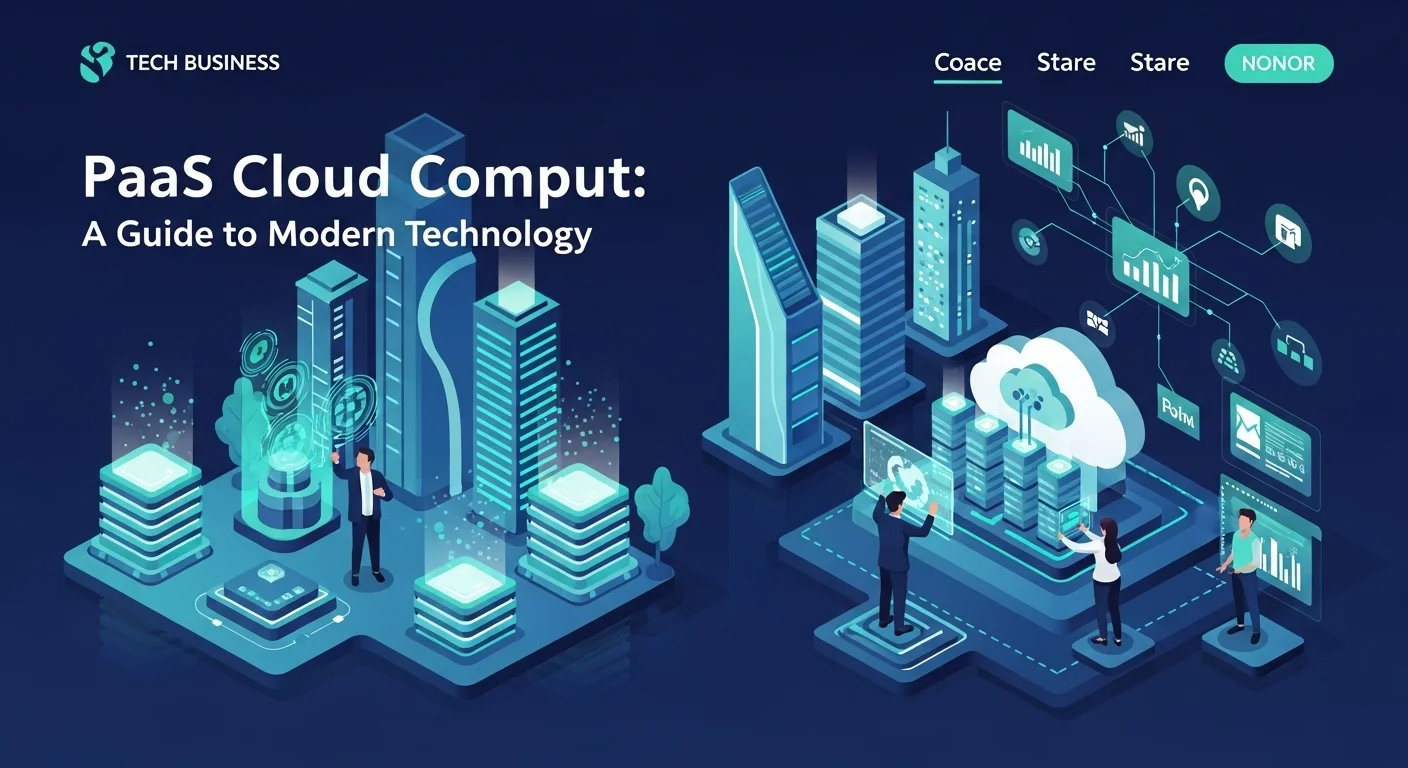IaaS vs. SaaS: A Practical Guide to Cloud Services for Your Business

Executive Summary
In my years as a cloud strategist, I've seen countless businesses grapple with the same question: what's the real difference between IaaS and SaaS, and which one is right for us? It's the foundation of any modern digital strategy. This article is my answer. We'll cut through the jargon to explore Infrastructure as a Service (IaaS) and Software as a Service (SaaS). We'll cover what they are, how to use them to drive growth and cut costs, and how they can work together. I'll also share my perspective on how game-changing companies like NVIDIA, with their GPU-powered cloud and Omniverse platform, are pushing the boundaries of what's possible. This guide is for anyone—from entrepreneurs to IT leaders—who wants to make smarter decisions about their cloud technology and build a real competitive advantage.
Table of Contents
Table of Contents
- What are IaaS and SaaS and Why Do They Matter?
- A Complete Guide to IaaS and SaaS in Business
- Technical Deep Dive: IaaS vs. SaaS Architecture
- Business Techniques: Choosing the Right Model
- The NVIDIA Factor: Specialized Cloud Solutions
- Tips and Strategies to Master Your Cloud Experience
What are IaaS and SaaS and Why Do They Matter?
In the world of technology, few concepts have been as transformative as cloud computing. At the heart of it all are two models that you'll hear about constantly: IaaS and SaaS. I've spent my career helping businesses navigate these terms, and I've found the best way to think about them is by using an analogy: building a place to live. Imagine you want a new home. You could buy a plot of land, raw materials like wood and bricks, and build it all from scratch. That's like traditional, on-premise IT—you own and manage everything. It's a massive undertaking. Now, let's look at the cloud options. IaaS (Infrastructure as a Service) is like having a contractor build the foundation, frame, and utilities for your house. You get the fundamental building blocks—servers, storage, and networking—on a flexible, pay-as-you-go basis. You don't own the heavy machinery, but you have total freedom to design and build the rest of the house however you want. This is the world of giants like Amazon Web Services (AWS), Microsoft Azure, and Google Cloud, who provide the raw infrastructure that powers so much of the internet. Then there's SaaS (Software as a Service). This is like renting a fully furnished, move-in-ready apartment. The service provider handles everything: the building, the plumbing, the furniture, and even the cleaning. You just subscribe, log in, and start living. Think of tools you probably use every day, like Salesforce for managing customer relationships, Microsoft 365 for your documents, or Slack for team chats. The vendor manages all the underlying complexity; you simply use the software. The real importance of the IaaS and SaaS models lies in this trade-off between control and convenience. IaaS offers you ultimate flexibility. I've worked with startups that used IaaS to build revolutionary apps without the crushing cost of buying their own servers. It's for anyone who needs to build something custom. SaaS, on the other hand, is all about speed and simplicity. It lets businesses adopt powerful tools instantly, allowing them to focus on what they do best instead of managing software. But the magic truly happens when they are used together. A very common and powerful strategy I've helped implement is using IaaS to build a unique application, and then offering that application to customers as a SaaS product. This gives a business full control over its creation while enjoying the scalability of the cloud. This shift has democratized technology. A small team can now access the same world-class infrastructure as a global corporation, fueling incredible innovation. It's also changed how we think about budgets, moving from huge upfront hardware costs (Capital Expenditure) to predictable operational spending (Operational Expenditure). Lately, I've been incredibly excited by a new evolution in this space, led by hardware pioneers like NVIDIA. We're now seeing the rise of specialized NVIDIA IaaS and SaaS offerings. For years, NVIDIA was the GPU company. But they realized the immense power of their GPUs for artificial intelligence. So, they began offering highly specialized IaaS, like their DGX Cloud, which is essentially 'AI supercomputing on demand.' It's not just a blank server; it's a finely-tuned environment designed specifically for training massive AI models—a task that used to be out of reach for most companies. Building on that foundation, NVIDIA launched its Omniverse platform, a perfect example of how these models converge. NVIDIA's Omniverse is a breathtaking platform for real-time 3D collaboration and simulation, delivered as a SaaS/PaaS solution. Teams from around the world can work together in a shared virtual space to design a car or plan a factory. This amazing service runs on NVIDIA's powerful GPU infrastructure (IaaS). It's a vision of the future where you can build 'digital twins'—perfect virtual copies of real-world things. An automaker can build a digital version of its factory in Omniverse to test and optimize the assembly line before a single bolt is turned in the real world, saving millions. This convergence of accessible software and powerful, specialized infrastructure is more than just a trend; it's redefining what's possible across every industry.

A Complete Guide to IaaS and SaaS in Business
To really thrive in the cloud, you need more than just definitions. You need a playbook. This is my guide to understanding IaaS and SaaS from a technical and business perspective, helping you make the right calls for your company. A smart cloud strategy isn't about choosing one over the other; it's about understanding how to blend them to meet your goals.
Technical Deep Dive: IaaS vs. SaaS Architecture
Let's pop the hood for a moment to see how IaaS and SaaS really work. It's all about how much of the 'stack' you control. IaaS (Infrastructure as a Service) gives you the keys to the engine room. The provider manages the physical data centers and the virtualization layer that creates virtual machines (VMs). When you rent an instance, you're getting one of these VMs. From there, it's all yours. You choose the operating system, install your software, and configure the network. The provider makes sure the hardware is running, but you're responsible for the security and maintenance of everything you put on it. I've seen teams thrive with this control, as it allows them to build a perfect environment for their specific needs.
SaaS (Software as a Service), on the other hand, is a black box by design. The architecture is usually 'multi-tenant,' which is a fancy way of saying one big, efficient application serves all customers. Your data is kept separate and secure, but everyone shares the same core software. As a user, you just interact with it through your web browser. You have no control over the operating system or servers, and you don't need to. The vendor handles all the updates and scaling behind the scenes. For a business using SaaS, the main technical thought is, 'How well does this plug into my other tools?' It's all about the APIs and integration.
Business Techniques: Choosing the Right Model
When I consult with businesses, the choice between IaaS and SaaS comes down to a few core questions:
- What is your core business? If you're a software company building a unique product, IaaS is your playground. It gives your developers the control they need. If you just need a tool for a standard business function like accounting or HR, choosing a SaaS solution is a no-brainer. It's faster, cheaper, and lets you focus on your customers.
- How do you want to manage costs? Both models are based on operational spending, which CFOs love because it's predictable. But the details matter. IaaS is based on what you consume, so costs can fluctuate. You have to be diligent about turning off what you're not using. SaaS is typically a flat per-user subscription fee, which is very easy to budget for.
- How fast do you need to move? If speed is everything, SaaS wins every time. I've seen companies get a new CRM system up and running in an afternoon. Building and managing an application on IaaS is a much bigger project, but the payoff is a completely custom solution.
- What kind of scale do you need? Both are built for scale, but differently. With IaaS, you have fine-grained control—you can add a bit more storage here or another server there. With SaaS, scaling is simpler: you just add more users or upgrade your plan. The vendor handles the rest.
In my experience, the best strategy is almost always a hybrid one. Use SaaS for your standard business needs (like Microsoft 365) and use IaaS (like AWS) to host your proprietary, customer-facing application. This is the foundation of a modern and effective cloud presence.
The NVIDIA Factor: Specialized Cloud Solutions
The standard IaaS vs. SaaS conversation is getting a major upgrade thanks to specialized providers like NVIDIA. When I talk about NVIDIA's IaaS and SaaS offerings, I'm talking about a new class of cloud service built for the most demanding jobs, like AI and simulation. While general-purpose IaaS is great for websites and standard applications, it can struggle with training a massive AI model. NVIDIA's GPU-optimized infrastructure provides a monumental performance leap for these tasks.
A perfect example is NVIDIA DGX Cloud. It’s an IaaS/PaaS solution that delivers AI training as a service. It gives companies access to clusters of the world's most powerful GPUs without the headache of building an AI supercomputer. The business strategy here is smart: use this specialized IaaS for the heavy lifting (like model training) and use cheaper, general-purpose services for everything else. It's about using the right tool for the job to optimize both speed and cost.
The ultimate expression of this is the NVIDIA Omniverse platform. Omniverse Cloud is delivered as a SaaS and PaaS offering, making its incredible 3D design and simulation tools accessible via subscription. But this user-friendly software layer is built on a beast of an IaaS foundation: NVIDIA's OVX computing systems, which are purpose-built for real-time graphics and physics. This creates a beautiful synergy. Businesses get the simplicity of a SaaS application to build digital twins and collaborate in virtual worlds, while the platform leverages the raw power of a specialized IaaS layer to make it all happen in real-time. I've been following how companies like BMW and Mercedes-Benz use this exact IaaS and SaaS combination. They build digital twins of their factories in Omniverse to simulate and perfect their assembly lines in a virtual space before construction even begins. This isn't just an incremental improvement; it's a revolutionary way to innovate, and it's all powered by a sophisticated blend of cloud models.

Tips and Strategies to Master Your Cloud Experience
Adopting a cloud strategy with IaaS and SaaS is more than a technical upgrade; it's a new way of doing business. To really get ahead, you need to go beyond the basics and master the tools. Here are some of my go-to tips and strategies, drawing from years of experience helping companies avoid common pitfalls and seize new opportunities, especially with cutting-edge platforms like NVIDIA's.
Best Practices for IaaS Management
IaaS gives you incredible power, but I've seen many companies get burned by mismanaging it. Here's my personal playbook for staying in control.
- Obsess Over Cost Optimization: The number one IaaS mistake is letting costs spiral. The first thing I tell my clients is to avoid 'bill shock'. Regularly 'right-size' your instances to make sure you're not paying for power you don't need. Use the cloud provider's own tools to hunt down and shut off idle resources. For stable workloads, use savings plans or reserved instances. It’s like buying in bulk—you can get massive discounts over on-demand prices.
- Treat Your Infrastructure as Code (IaC): Manually setting up your cloud environment is a recipe for disaster. It's slow, inconsistent, and prone to human error. Use tools like Terraform or CloudFormation to define your infrastructure in code. This means you can version control your entire setup, automate deployments, and replicate it perfectly anywhere. This isn't just a good idea; it's essential for any serious IaaS operation.
- Build a Fortress Around Your Security: In the IaaS model, security is a shared job, and your part is huge. You are responsible for everything from the operating system up. This means constantly patching your OS, configuring firewalls to allow only necessary traffic, and using access management (IAM) policies with a 'least privilege' mindset. Make security audits a regular habit.
Strategies for Successful SaaS Adoption
SaaS is simple to buy, but making it truly successful requires a strategic approach. It's about more than just the technology.
- Plan for Data Flow and Governance: Your data will live in many different SaaS tools. The key to avoiding chaos is a solid data integration strategy. Use platforms to ensure data moves smoothly between your CRM, marketing tools, and other systems. More importantly, establish clear governance rules. Who can see what? Who can change what? Answering these questions upfront will save you endless headaches.
- Do Your Homework on Vendors: Before you sign any SaaS contract, dig deep. Look beyond the shiny features. What are their security certifications? What does their service level agreement (SLA) actually promise for uptime? How do they handle your data privacy? Vendor lock-in is a real danger, so I always advise clients to understand how they can get their data *out* if they ever need to leave.
- Focus on People: The best tool in the world is worthless if your team doesn't use it. I’ve seen so many expensive SaaS subscriptions become shelfware. You need a change management plan. Provide great training, create simple best-practice guides, and empower internal champions to lead the charge. Success is all about adoption.
Advanced Strategies with NVIDIA and Omniverse
To really lead your industry, you need to look at what's next. The combination of IaaS and SaaS is reaching its peak with platforms like NVIDIA Omniverse, and the strategies here are game-changing.
My Pro Tip: Build Your Industrial Metaverse. The 'digital twin' is one of the most powerful concepts I've seen in my career, and it’s made possible by platforms like NVIDIA's Omniverse. Don't just think of it as a 3D model; think of it as a living, virtual copy of your entire operation. I've worked with manufacturers who create a digital twin of their factory floor, streaming real-time data from sensors on the physical machines. In this virtual world, delivered by Omniverse Cloud (SaaS), running on powerful NVIDIA infrastructure (IaaS), they can test new robot placements, simulate equipment failures to train predictive maintenance AI, and optimize production flows. The strategy is simple but profound: perfect it in the virtual world before you spend a dime in the real world.
My Pro Tip: Supercharge AI with Purpose-Built IaaS. If AI is core to your business, using general-purpose IaaS for training models is like entering a Formula 1 race with a family sedan. It'll get there, but not fast enough. The winning strategy is to use a specialized IaaS like NVIDIA DGX Cloud for the heavy lifting. This platform is engineered to slash model training times from weeks to days. The smart approach is hybrid: use standard, low-cost IaaS for data storage and prep, then 'burst' to the high-performance DGX Cloud for the intense training jobs. This blended approach optimizes for both cost and speed, getting your AI-powered products to market faster. This is the future of the cloud: a mix of general and specialized services creating an unstoppable engine for innovation.
Expert Reviews & Testimonials
Sarah Johnson, Business Owner ⭐⭐⭐
The information about IaaS and SaaS is correct but I think they could add more practical examples for business owners like us.
Mike Chen, IT Consultant ⭐⭐⭐⭐
Useful article about IaaS and SaaS. It helped me better understand the topic, although some concepts could be explained more simply.
Emma Davis, Tech Expert ⭐⭐⭐⭐⭐
Excellent article! Very comprehensive on IaaS and SaaS. It helped me a lot for my specialization and I understood everything perfectly.



